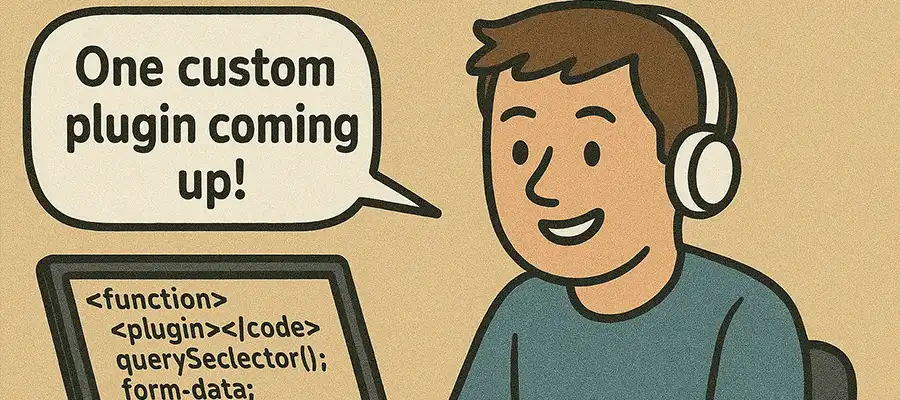Web professionals use WordPress because of its infinite flexibility. We can build virtually any type of website. Everything is possible when it comes to looks and functionality.
That doesn’t mean the content management system (CMS) is easy for our clients, however. All the possibilities of WordPress can make for a disjointed back-end workflow. That makes it difficult to add content, manage orders, and help customers.
It’s one reason why websites become stale. Frustrated clients may cringe at the task ahead of them, so they stop logging in. That comes back to haunt us, as a disengaged client won’t be asking for a redesign or new features.
So, how do we avoid this scenario? It starts by keeping workflow in mind during every step of the design and build processes. Keeping an open line of communication also makes a difference.
Let’s explore some techniques for identifying and resolving your client’s WordPress pain points.
Think About the Impact of Design and Development Choices
We often make decisions based on our experiences. For instance, choosing a plugin or theme because it worked well on a previous project. That makes sense, to a point.
Every decision we make during a website build can impact our client’s workflow. We may not consider this until a client reaches a pain point. Then, we’re left to wonder where things went wrong.
For example, some form plugins store entries in the WordPress database. Others may rely only on email delivery. What happens if a client wants to browse entries and filter them by date? Choosing the latter plugin means an arduous process of searching for and cataloging emails.
The same principle applies to plugin ecosystems. WooCommerce features thousands of extensions that enhance functionality. However, some may provide a more seamless experience in the dashboard. The tighter the integration, the better for you and your client.
On the other hand, a piecemeal approach to features means using plugins from multiple vendors. There’s no guarantee you’ll be able to extract useful data in a unified way. You may have to resort to complex database queries.
The above scenarios are neither good nor bad in a general sense. Much depends on your client’s needs and skill level. Those are important considerations when choosing what to build and how it should work.

Help Clients Determine Their Needs and Comfort Level
Asking the right questions is the best way to determine a client’s needs. You can build a workflow to fit your client when you understand their expectations.
This is easier said than done, especially in the early stages of a project. Not everyone knows what they want or even how to articulate it. For instance, a client without e-commerce experience may not realize what tasks they’ll need to perform when an order arrives.
That might lead to making decisions without your client’s input. We know what works and what doesn’t, after all…
Not so fast!
This approach can lead to future problems. A client may not be as comfortable with a task as we are. Or perhaps there are too many steps for them to remember. The result is building something your client can’t or doesn’t like to use.
A more effective solution is to encourage clients to think about these tasks before implementation. Share a typical scenario for processing orders or editing content. The sooner they consider the options, the better the outcome.
You may notice that their input shifts as the project moves forward. They might want to refine processes, which could lead to extra work. However, it’s worth doing if it increases their comfort level.
No one wants to rip an existing website apart, after all.

Dealing With Workflow Issues on Existing Websites
WordPress workflows don’t stay easy and efficient forever. Sometimes, a new feature adds a degree of difficulty to a process. Clients are also apt to change their minds. What to do then?
A conversation with your client will provide a helpful reset. Listen to their pain points and share what (if anything) will need to be changed on their website. This information will help you create a plan to streamline things.
The best-case scenario is finding a plugin that makes life easier for your client. From there, it’s a matter of installing and activating your way to workflow bliss.
The answers aren’t always easy, however. A plugin may not be very flexible or have the options you need. Yet, it may also be a requirement for the website’s functionality. As such, finding a replacement isn’t realistic. That means turning to custom code.
Extending an existing plugin is a possible solution. If the plugin is well documented, you might use AI to generate a helpful code snippet. At the very least, you’ll have a head start on the project.
In more difficult cases, you might build a plugin from scratch. AI is once again your friend in that scenario.
Be sure to use a staging environment to test code, regardless of the path you choose. It could save you from even more trouble.

Make WordPress Work for Your Clients
WordPress offers endless possibilities – but not all add up to a great workflow. Creating one takes experience, research, and a willingness to work with your clients.
You’ll also need to adapt to change. What worked for your client a year ago might not fit their current needs. The key is streamlining processes without impact to the website’s mission or data.
The great part is that WordPress gives you the power to build custom solutions. That will come in handy when dealing with complex issues.
So, keep your client’s workflow in mind every step of the way. Your attention to detail will benefit everyone.
Related Topics
Top